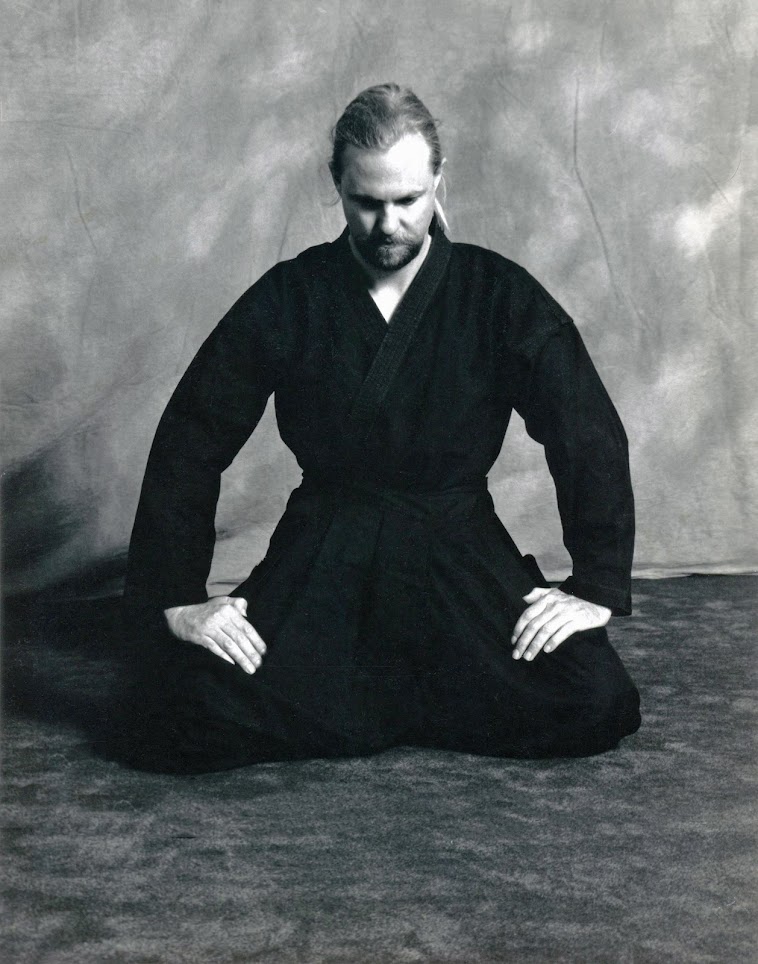By Scott Shaw
Martial
artists are forever seeking new methods to refine their personal science of
self-defense. Once the physical and philosophic basics of a system are
mastered, then comes the metal refinement that takes the student forward,
moving them towards the level of martial arts mastery.
In
order to raise the ever-evolving understanding of my martial arts students, I
personally prescribe a method that I called, “The Three D’s of Self-Defense.”
This method is provided to help define a precise course of action for each
confrontation and to ultimately chart a pathway towards victory. The Three D’s
are:
1. Deflect
2. Deny
3. Defy
To
briefly go into the basics for this three-part self-defense philosophy, we can
view each element individually.
Deflect
A
physical confrontation is never to anyone’s benefit. It is only the ego-driven
martial artist that desires to go toe-to-toe with another person and emerge
victorious. To this end, it takes the larger man (or woman) to walk away from a
fight rather than to allow another person to drag them into a physical
altercation. Therefore, the first means of deflection is to walk away from any
confrontation.
Certainly,
we all realize that walking away is not always an option. This is especially
the case when a person either grabs you or strikes you and is not going to stop
until they are disabled. To achieve self-defense in the most conscious manner
possible, while keeping yourself free for personal injury, the true martial
artist will always deflect an attack rather than encounter it directly.
Forcefully
blocking an assault has been shown time-and-time again to lead to injuring the
blocking component of your arm or actually breaking your blocking hand.
Therefore, learning the science of opponent energy manipulation and deflection
is the ideal first tool of effective self-defense that each martial artist
should master.
Deny
When there is no
way to exit a physical confrontation and stop it before it begins, and
deflection has not halted an opponent’s attack, the next step in conscious
self-defense is to deny their ability to continue forward with their assault.
The quickest and most debilitating way to engaged an oncoming opponent is to
strike them before they have ability to strike you. For example, they are rapidly
moving in towards you to attack. Before they have the chance to connect with a
punch, kick, or grab, you deliver a powerful first-strike to a debilitating
part of their body.
When encountering
an enraged attacker, each situation is defined by its own set of circumstances.
Therefore, there is no one strike that should always be used. But, a powerful
straight punch to the face, a front kick to the groin, a hammer fist to the
temple, a knife hand or fist to the throat are all viable first-strike weapons
in an offensive defense.
Defy
A physical
altercation is rarely won by simply delivering one strategically placed blow to
an attacker. Though occasionally, if you deliver a powerful strike to
debilitating location on your opponent’s body, this may occur. But, you can
never rely upon this. I have witnessed a number of incidences when a person was
walking away from a confrontation, after having knocked their opponent to the
ground, only to have the opponent jump up and charge after them.
Therefore, you must defy their ability to come after you once the first round
has been won.
No honorable
martial artist would ever kick an opponent when they are down. That being said,
you must be sure that you actually have the ability to completely leave the
scene of the confrontation before you turn your back on your attacker. To this
end, simply leaving your opponent with a bloody nose may not be enough. Unless
they have formally conceded the fight, you must continue forward with your
offensive defense until they are fully subdued.
Again, each
confrontation is defined by its own set of parameters, so it will ultimately be
up to you to know when you can safely leave. But, before you attempt to leave,
be sure that your opponent’s ability to come after you has been nullified or
you may not emerge victorious during the second round of the confrontation.
Three Together
The elements of,
“The Three D’s of Self-Defense,” can also be tied together and used as one
cohesive self-defense methodology. For example, an attacker races towards you.
Before he can make impact, you deflect his initial attack. Immediately, you
follow up with a powerful, well-placed, strike that stuns him. Finally, wasting
no time, you follow thru with a debilitating second punch, kick, break, or throw
that ends the entire confrontation. By defending yourself in this manner you
allow your attacker no time to rethink or redirect his initial attack and you
emerge victorious.
The martial arts
are a refined science of physical and mental training designed to make the
practitioner a more conscious and aware interactive participant of life. For
this reason, the true martial artist never trains simply to learn how to fight.
Instead, they train in order to gain new mental and physical understandings
that will keep themselves and their loved ones safe. They achieve this by
avoiding confrontations whenever possible and achieving physical victory only
when absolutely necessary.
Strive to become
the best, most conscious and competent martial artist that you can be.
Copyright© 2014 – All
Rights Reserved
